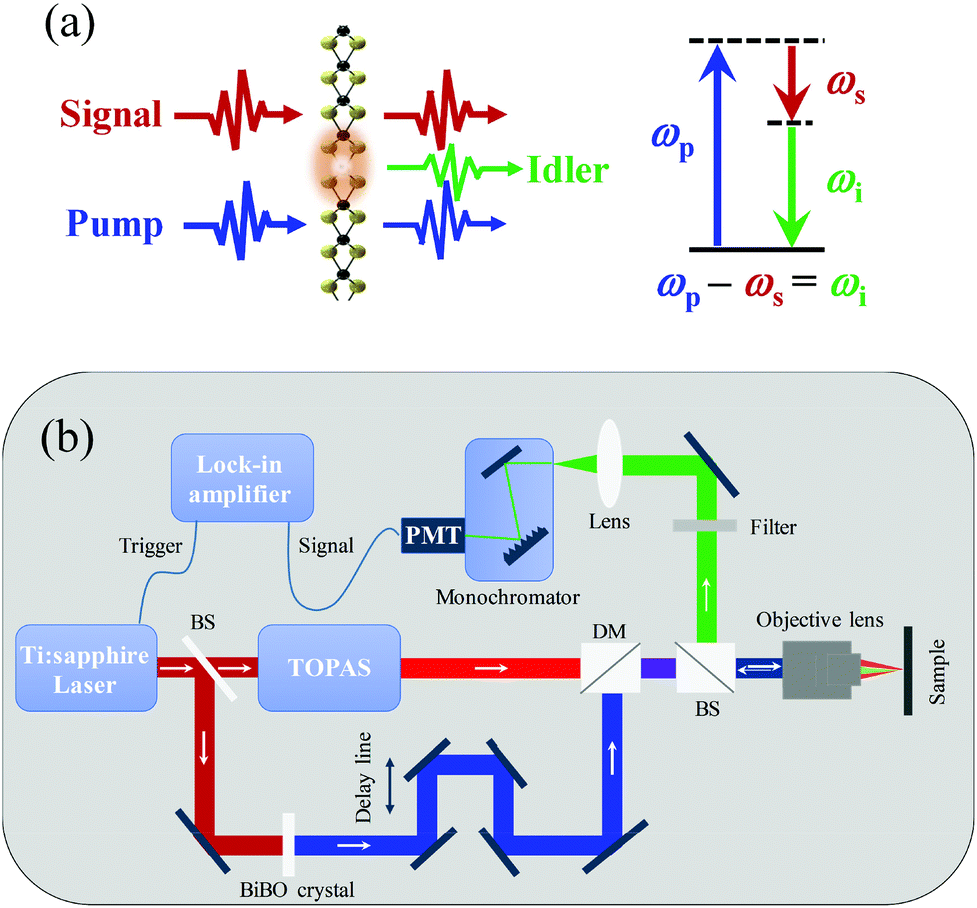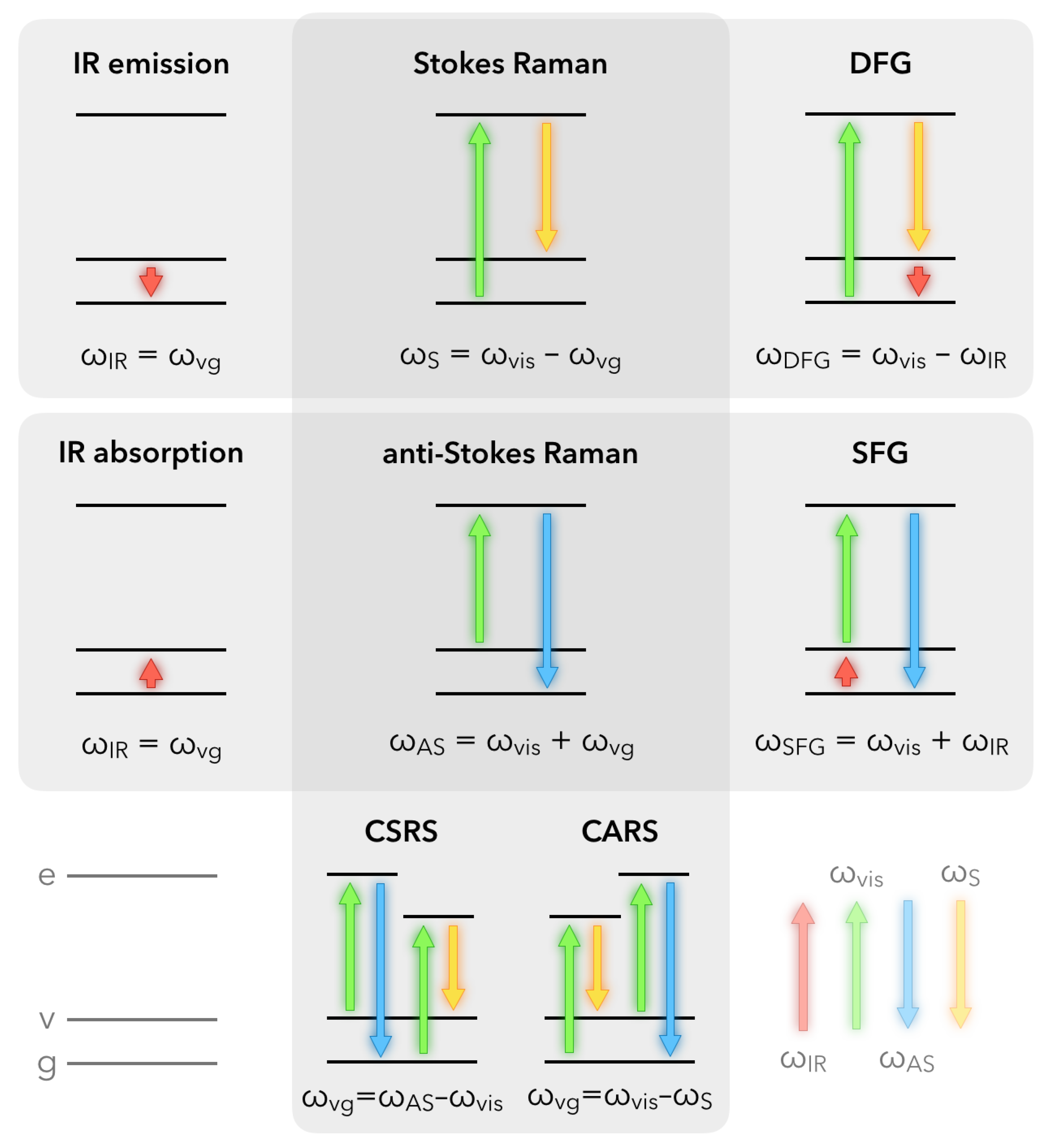Contents

Source: RSC Publishing – The Royal Society of Chemistry
<>
Nonlinear Optical Processes in Crystal Materials
Introduction
Crystal materials lacking inversion symmetry can exhibit nonlinear optical effects. Sum frequency generation (SFG) and difference frequency generation (DFG) are two common nonlinear processes that occur in such materials.
Sum Frequency Generation (SFG)
SFG involves the generation of a new optical frequency by combining two input frequencies. This process is used in various applications, such as generating red or ultraviolet light.
Difference Frequency Generation (DFG)
DFG creates a new frequency by mixing two input frequencies. This process is utilized in producing mid-infrared wavelengths for applications like laser spectroscopy of gases and generating terahertz waves.
Phase Matching and Efficiency
Efficient SFG and DFG processes require phase matching to ensure optimal results. Typically, only one of the processes can occur at a time due to the lack of simultaneous phase matching for both.
Applications
Sum frequency generation is used in a variety of applications, including laser technology and spectroscopy. Difference frequency mixing is essential for generating specific wavelengths required for various scientific and industrial purposes.
Insight from a Photon Picture
In SFG, both input pump waves experience pump depletion, while in DFG, the lower-frequency wave is amplified. Understanding these mechanisms is crucial for efficient nonlinear optical processes.
Carrier-Envelope Offset Frequencies
For operating with ultrashort pulses, the carrier-envelope offset frequency of the output from SFG or DFG is determined by the input frequencies. This parameter plays a significant role in the stability and performance of the generated optical waves.
Conclusion
Nonlinear optical processes in crystal materials offer a wide range of applications in photonics and laser technology. Understanding SFG and DFG mechanisms is essential for harnessing their potential in various fields.

Source: MDPI
Feel free to comment your thoughts.



